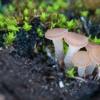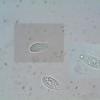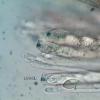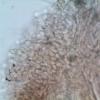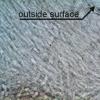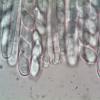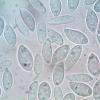
20-01-2026 17:49
 Hardware Tony
Hardware Tony
I offer this collection as a possibility only as e

15-01-2026 15:55
 Lothar Krieglsteiner
Lothar Krieglsteiner
this one is especially interesting for me because

17-01-2026 19:35
Arnold BüschlenHallo, ich suche zu Cosmospora aurantiicola Lite

16-01-2026 00:45
Ethan CrensonHi all, On decorticated hardwood from a New York

18-01-2026 12:24
Hello.An anamorph located on the surface of a thin

08-12-2025 17:37
 Lothar Krieglsteiner
Lothar Krieglsteiner
20.6.25, on branch of Abies infected and thickened
Helotiales
Koszka Attila,
31-10-2023 14:55
Apothecia 2-3 mm in diameter, always with stalk.
Growing on the ground, on dead parts of herbs, always near mosses.
Spores 18-20 x 8-10 um. Asci amiloid.
Any suggestion?
Hans-Otto Baral,
31-10-2023 15:48

Re : Helotiales
You are sure this is on a herb and not on moss? Are the living paraphyses without conspicuous guttulation? The apical ring looks almost like a Sclerotiniaceae, how is the excipulum? The micros remind me a bit of Sclerotinia trifoliorum, with heterogeneous spores in the asci.
Koszka Attila,
31-10-2023 17:14
Re : Helotiales
Many thanks! It's not clrear to me, which is the real host. The fruitbodies are always growing near moss, but not directly between the moss, nor on the living moss.
Living paraphyses hyaline, without guttulation, rarely with sparse deposit on their top.
The ectal excipulum with short, shligthly inflated, rounded cells.
Medullary excipulun reminds textura intricata, but mainly with paralel hyphae.
As you see, the shape and size of freshly ejected spores are extremely variable.
Hans-Otto Baral,
31-10-2023 18:00

Re : Helotiales
Yes, this is clearly S. trifoliorum. It must emerge from small sclerotia without contact to a host. In reality it must have developped in a Fabaceae.
You see very well the heterospory of the asci and the small nuclei in the free spores (they must be four per spore, maybe two in the small spores.
Koszka Attila,
31-10-2023 18:24
Re : Helotiales
Excellent, thanks!


